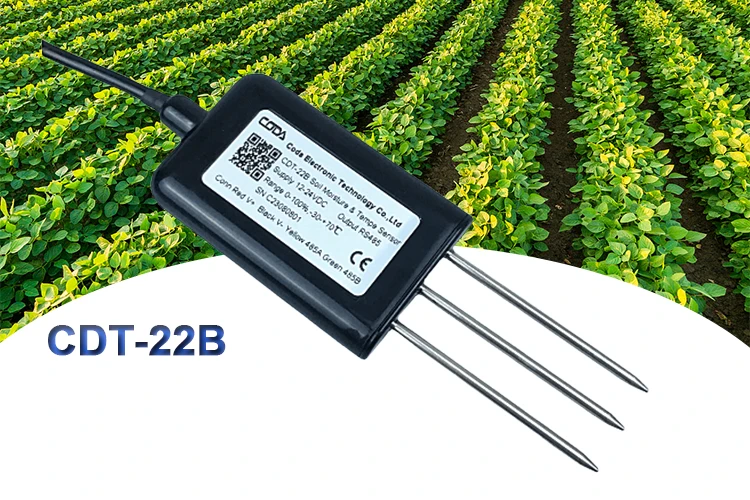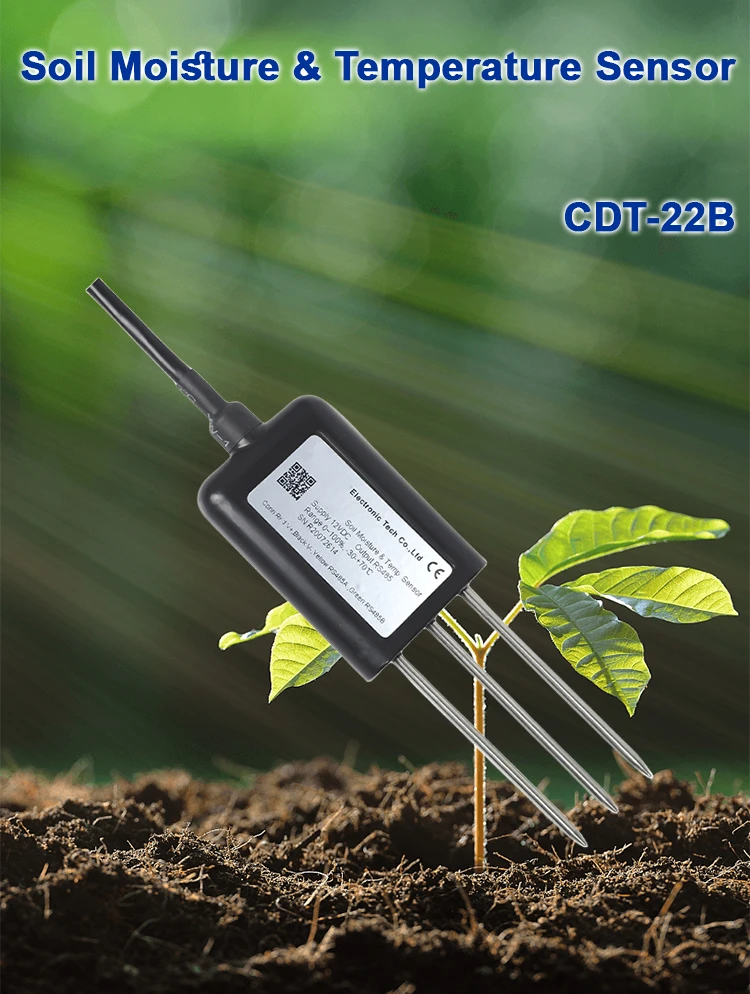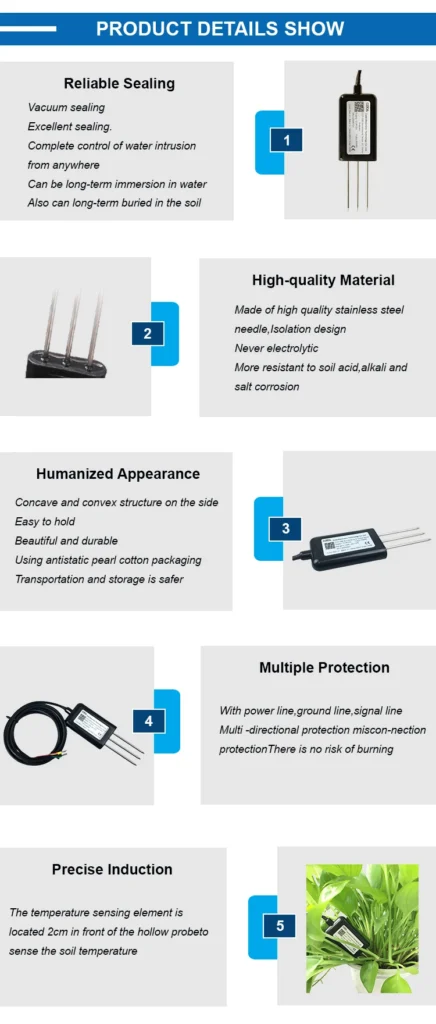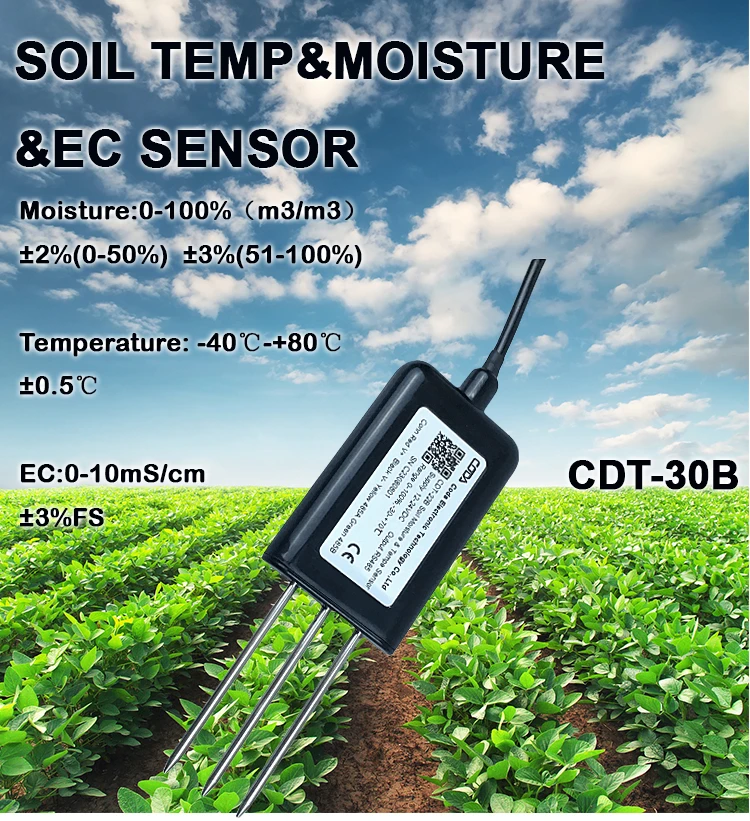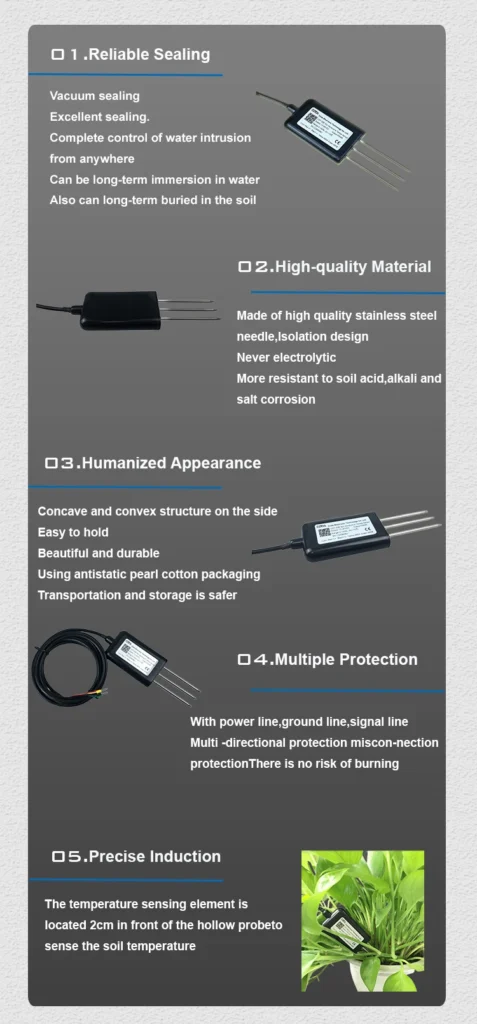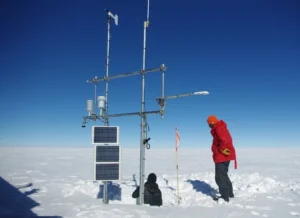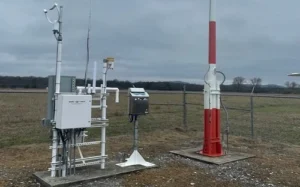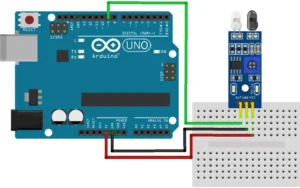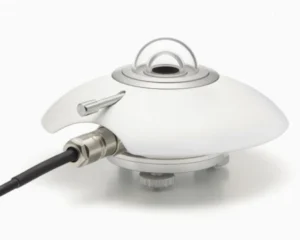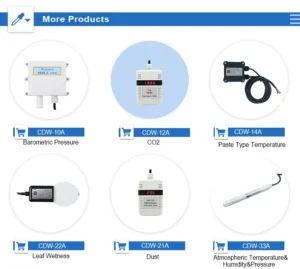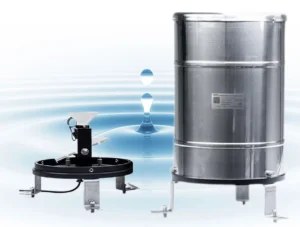tdr soil moisture sensors & fdr soil moisture sensors
Choosing the best soil moisture sensor depends on what you need and your situation. Soil moisture sensors check how much water is in the soil. They do this by measuring electrical resistance, capacitance, or electromagnetic waves.
This provides key information to help make farming better. These sensors are placed on farms. They send information to data centers using wired or wireless communication.
Types of Moisture Sensors
Here is a summary of the most common types of sensors. It explains how they work, what benefits they have, and what drawbacks they may have.
1. Resistive Moisture Sensor
– Principle: It shows how well soil can keep moisture. Soil conductivity goes up with more moisture.
– Advantages: It has a simple design and is cost-effective.
– Disadvantages: Soil salinity can affect its accuracy.
2. Capacitive Moisture Sensor
– Principle: It detects changes in capacitance caused by changes in soil moisture. This is done with a water-sensitive capacitor.
– Advantages: It has high accuracy and works well with different soil types.
– Disadvantages: It costs more than resistive sensors.
3. Frequency Domain Reflective (FDR) Moisture Sensor
– Principle: Measure moisture with electromagnetic pulse generator frequencies and dielectric properties constants.
– Advantages: “Accurate and safe, it can be automated and needs little calibration.”
– Disadvantages: Some calibration may still be needed from time to time.
4. Time Domain Reflective (TDR) Moisture Sensor
– Principle: It measures how long electromagnetic waves take to travel time through the soil. This helps find moisture levels.
– Advantages: It is very accurate and reliable. It is great for scientific research and advanced farming.
– Disadvantages: It can be expensive and hard to operate.
5. Tensiometers
– Principle: It measures soil moisture by checking how much water the soil can hold.
– Advantages: Gives clear, useful information.
– Disadvantages: Setting up is tricky and can cost a lot.
6. Gypsum Block Sensor
– Principle: It measures changes in conductivity in gypsum blocks. This shows shifts in soil moisture.
– Advantages: Cost-effective and easy to use.
– Disadvantages: Limited accuracy; it is best for general or less demanding uses.
Which Moisture Sensor Should You Choose?
The best sensor for you depends on your needs, budget, and how you plan to use it:
Tdr to measure sensors give very accurate data but can be costly and tricky to use.
If you need something cheap, pick resistive or gypsum block sensors. Just keep in mind that they may not be very accurate.
For ease of use and good performance, look at capacitive sensors.
FDR sensors are a good choice for many farming needs. They offer dependable accuracy at a fair price.
If you need to measure tension, you can use tensiometers. They must be treated with care.
The Role and Value of Moisture Sensors
Soil moisture meter are important tools in farming and water management. They help in many ways:
1. Providing Real-Time Data:
These sensors can check soil moisture, temperature, and other important factors in real time. They offer a strong scientific foundation for making farming choices.
2. Optimizing Irrigation Strategies:
Farmers can use data from sensors to change their irrigation plans. This helps them use water better.
3. Enhancing Crop Quality and Yield:
These sensors help farmers by watching the environment and the needs of their crops. They support science-based farming methods. This leads to better crop quality and more yields.
4. Reducing Operating Costs:
Best soil moisture sensor help farmers find out how much water their crops need. This cuts down on extra costs for irrigation tools and labor. It also lowers overall costs.
5. Advancing Agricultural Modernization:
Soil moisture sensors make farming easier and more modern. They help boost productivity and enhance management in farming.
Applications of in Agriculture
The best soil moisture sensors are used in many farming methods, such as:
1. Farmland Irrigation Management:
Keeping track of soil moisture in real-time helps farmers water their crops correctly. This stops too much or too little watering. This method helps use water better and cuts down on waste.
2. Greenhouse Climate Control:
In greenhouses, these sensors control temperature and humidity. This helps create the best conditions for crops and boosts their quality and yield.
3. Precision Agriculture:
Soil moisture data from different areas helps with targeted irrigation. This helps meet the water needs of plants. It makes care more precise and boosts overall farm output.
4. Monitoring Plant Diseases and Pests:
By checking soil moisture levels, we can quickly see early signs of pests or diseases. This helps us take steps to prevent crop damage.
5. Environmental Science Research:
Long-term monitoring of soil moisture helps us understand how climate change affects soil water. This information helps in making environmental policies.
6. Gardening:
These sensors help gardeners learn about soil conditions. They help you plan when to water and care for your plants. This helps plants grow healthy. It also makes gardens more beautiful and better for the environment.
7. Agricultural Research:
Researchers use data from soil sensors to study how soil moisture affects crop growth. This work helps improve science in farming.
Price Range of Soil Moisture Sensors
The price of soil moisture sensors varies based on brand, model, features, accuracy, and where you buy them. Here are some general price categories:
1. Basic Resistive or Simple Capacitive Sensors:
Typically priced between a few tens of dollars and about 300 RMB, this is great for users who need basic functions and lower accuracy.
2. Advanced Capacitive or Ion-Sensitive Sensors:
Prices range from about 150 to 800 RMB. These choices are better for work. They offer dependable agricultural monitoring and strong performance for research.
3. Time Domain Reflectometry (TDR) or Frequency Domain Reflectometry (FDR) Sensors:
These precise tools cost between a few hundred RMB and 5000 RMB. Designers create them for situations that need precise measurements.
4. Smart Sensors with Remote Monitoring Features:
These models have wireless features like Wi-Fi or Bluetooth. This lets us share data in real time. They usually cost between 500 and 1000 RMB. Premium brands or all-in-one systems may cost more.
5. Customized or Industrial-Grade Systems:
Custom solutions for specific needs can cost a lot of money. They may include full setups with sensors, tools for data collection, processing equipment, and software.
Soil moisture sensors are important tools in modern farming. They help measure soil moisture for better irrigation. When you buy one, first consider what you need and how much you can spend. Choose the right brand, model, and features for you.
Check prices online and in stores to find good deals. Read user reviews to learn how well the product works. Always buy from trusted sellers. This way, you will get reliable products and good support.
These sensors are key in improving farming practices. They help boost productivity, save water, and protect the environment. By combining science with nature, they help boost crop yields and protect natural resources. As technology grows, farmers will depend more on soil moisture sensors for farming innovation.
